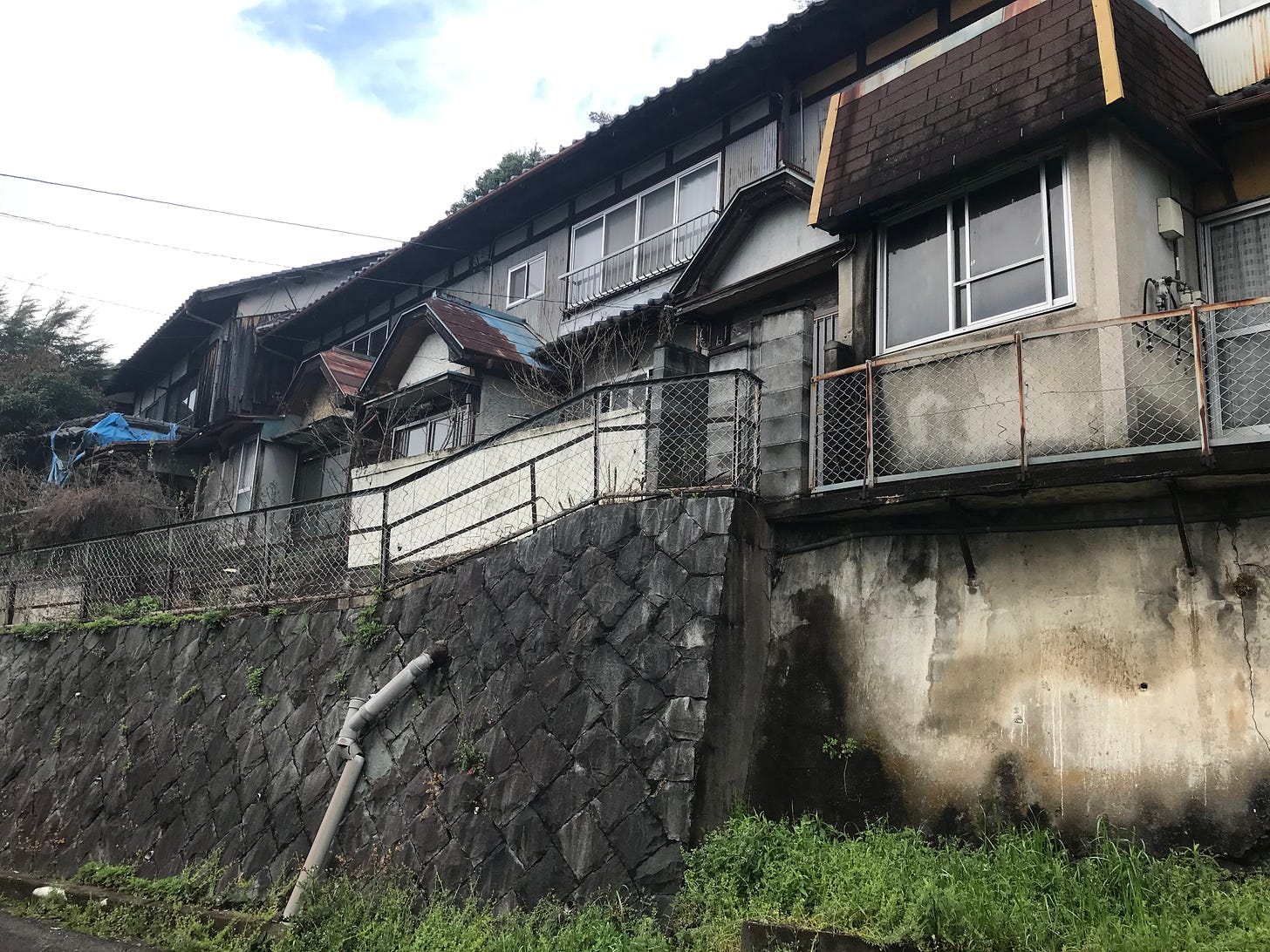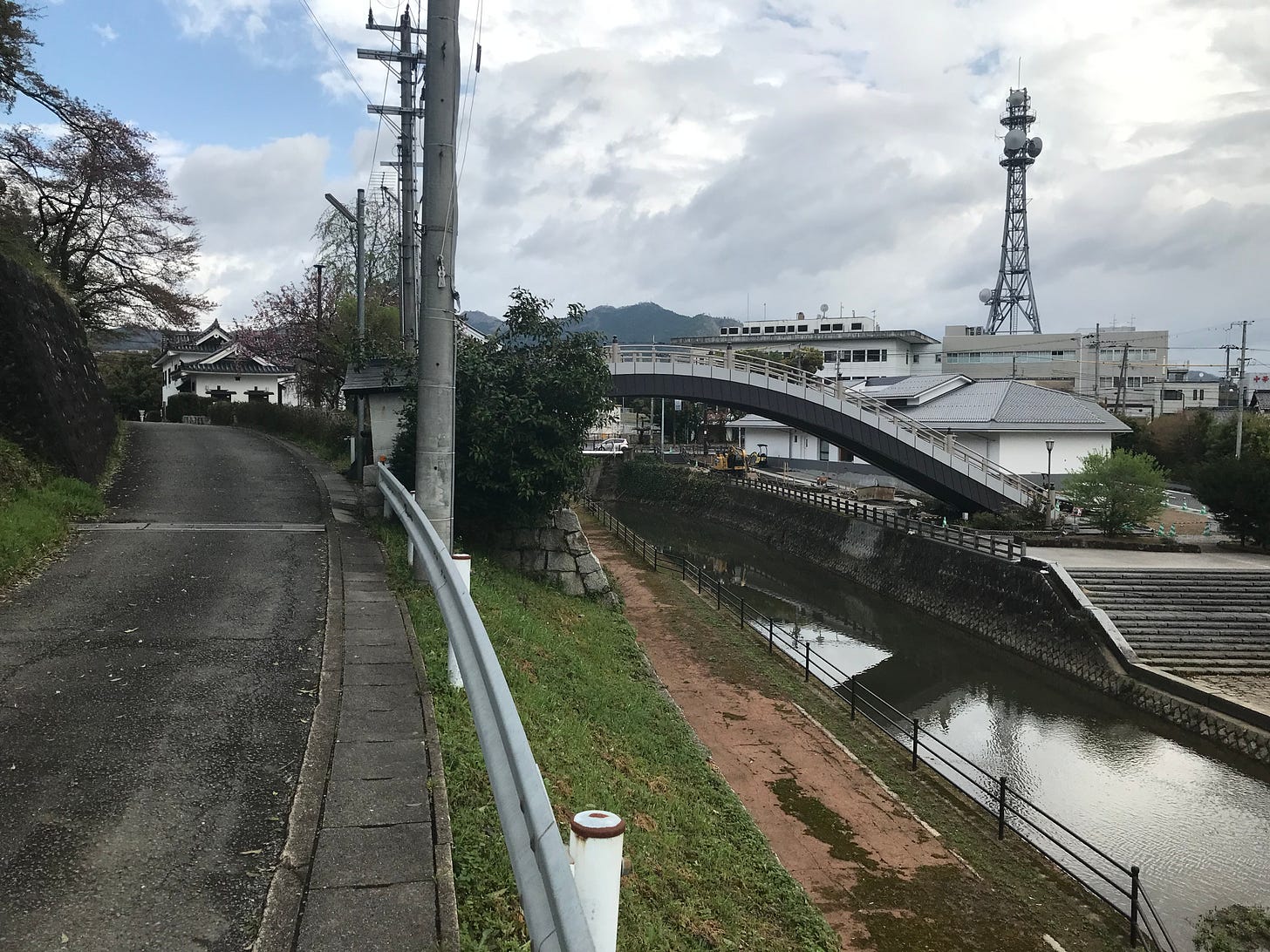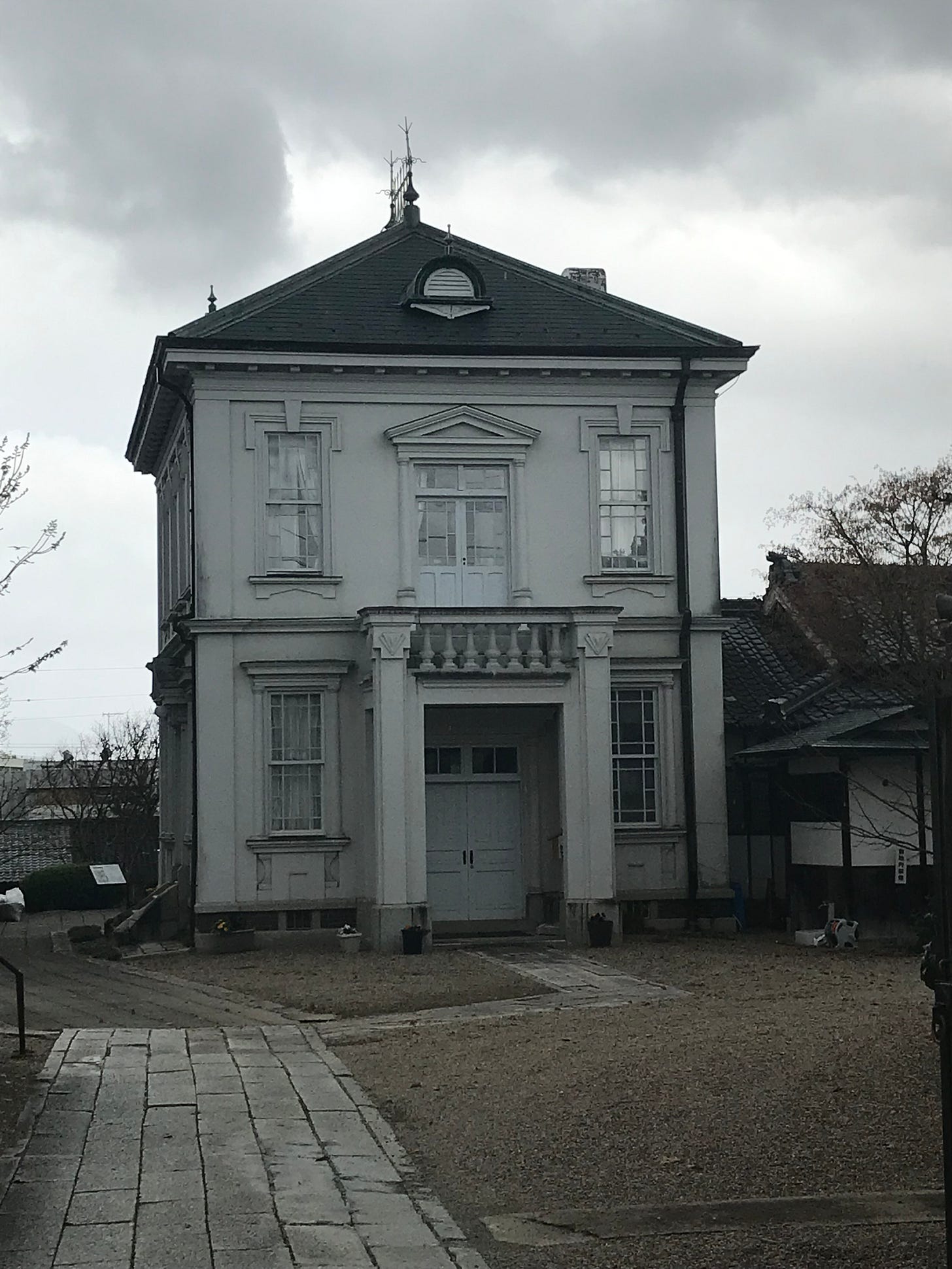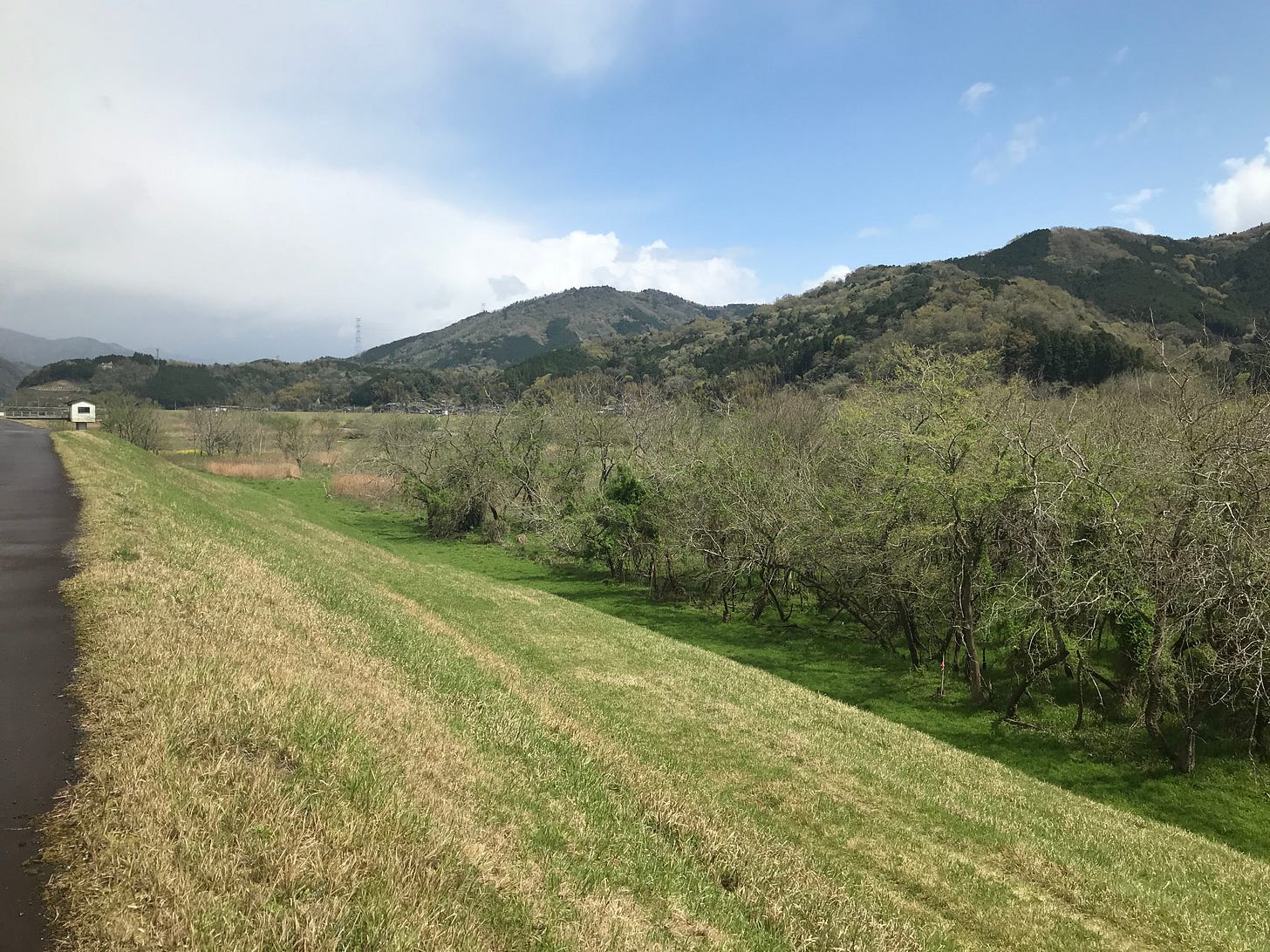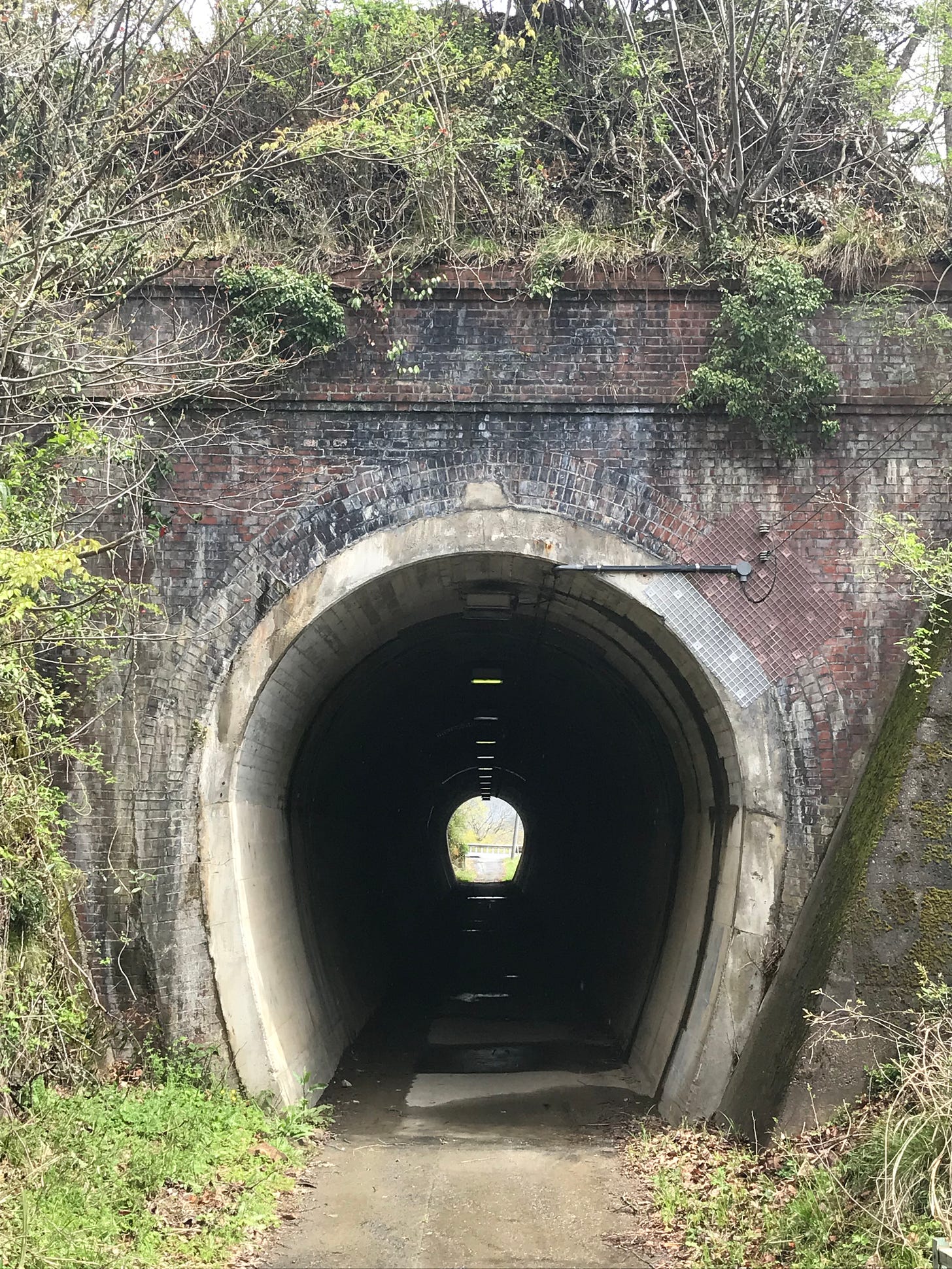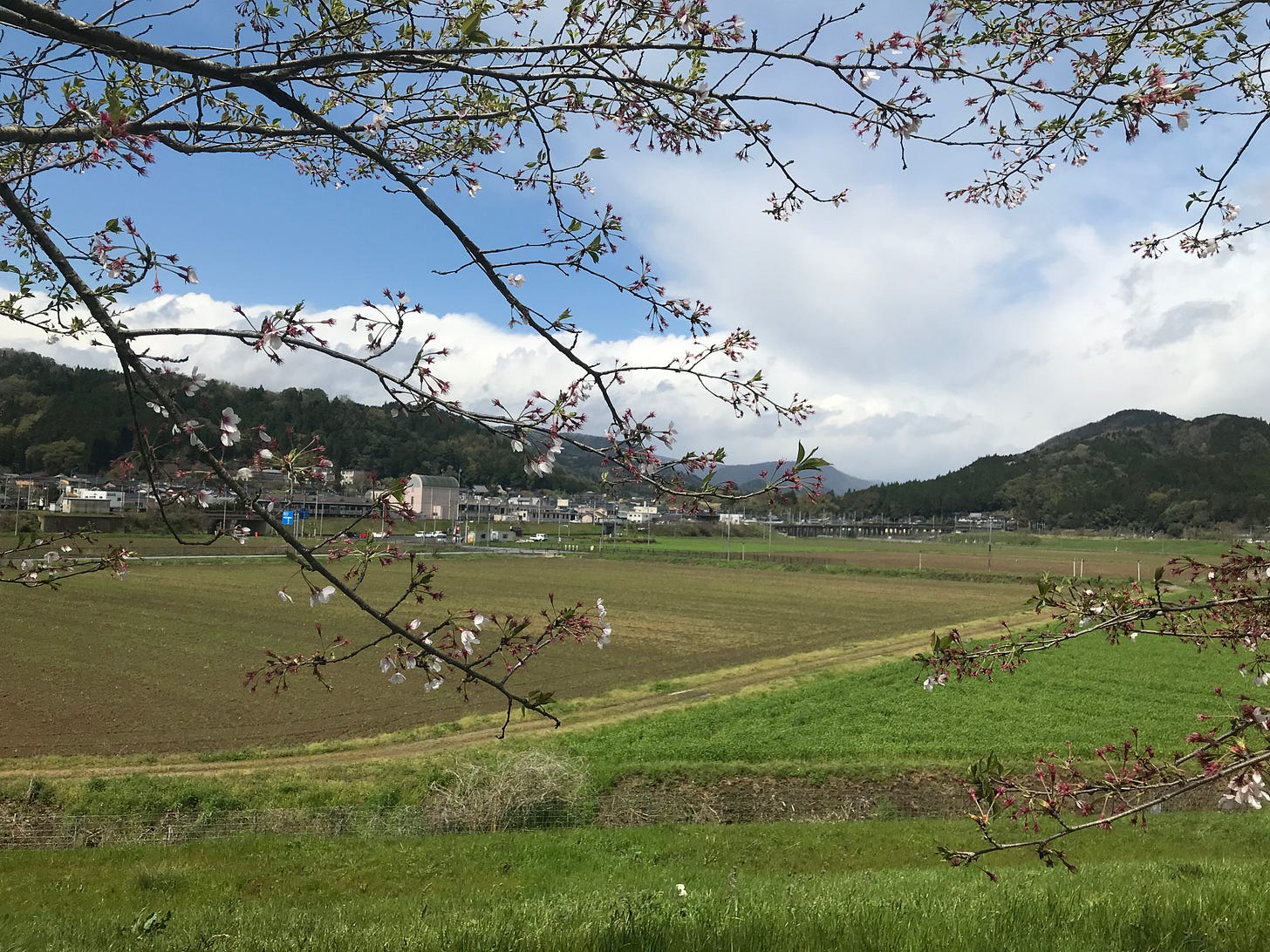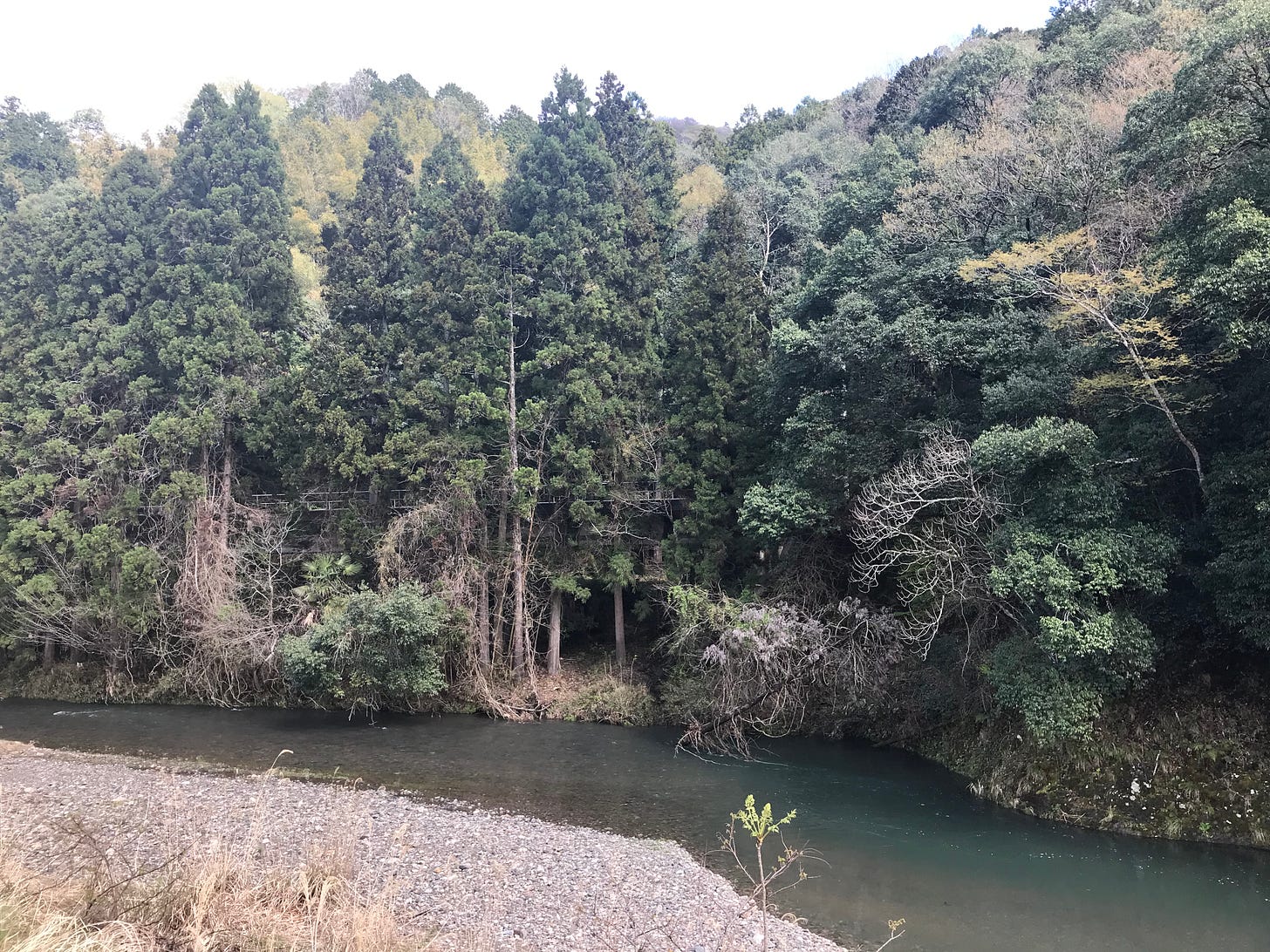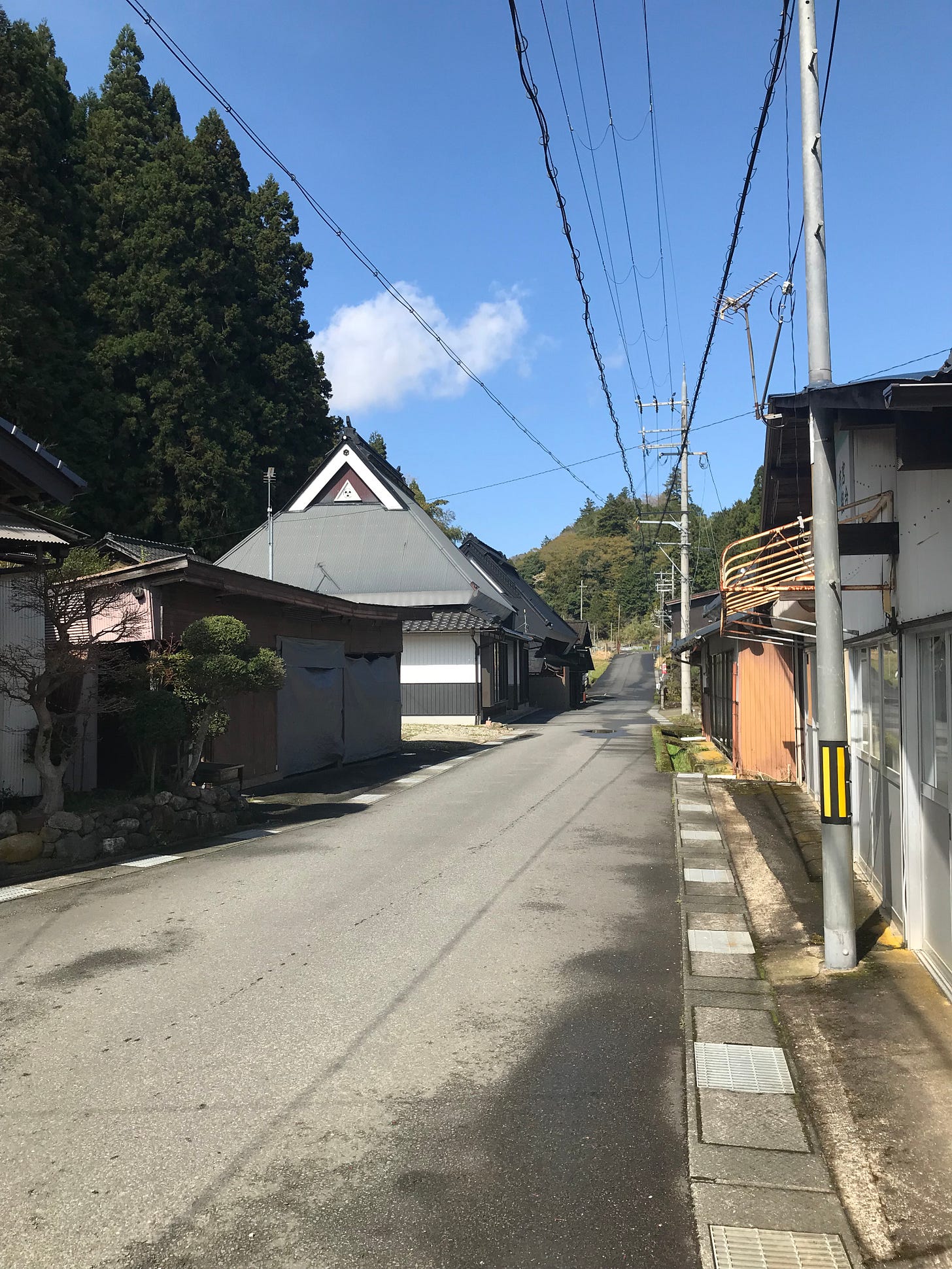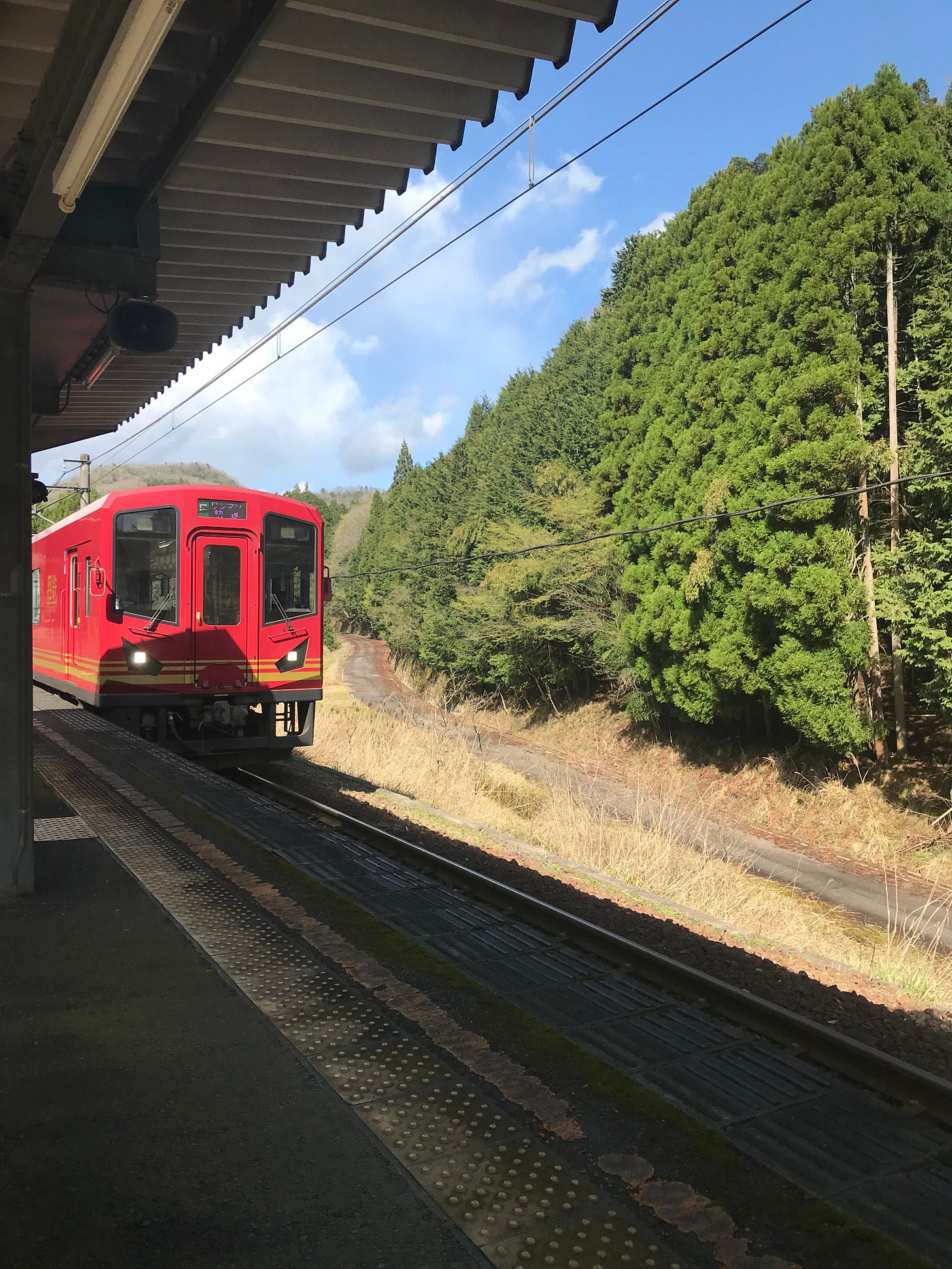Into Devil Country
From Fukuchiyama to Oechonaiku along the Japan Standard Time line
Cherry blossom season was over. The mountains were smothered with cloud. In the fields, the pale yellow stubble was covered by new shoots of blue-green grass, all of them dripping with dew. It was supposed to be sunny, but when I stepped off the train in Fukuchiyama, a cool wind blew fine rain from a tile-grey sky.
First, I walked to Fukuchiyama Castle. It sat on a flat-topped hill overlooking the town. I wasn’t sure which way the entrance was, so ended up walking all the way round the bottom. Dilapidated housing was tucked under one corner of the hill, but then, I turned the corner, and there was the entrance, newly renovated. Fresh white walls topped with grey tiles and a new museum, with an even newer museum under construction.
Knackered empty housing just around the corner from the castle…
…then, a new bridge and museums next to the castle entrance
The castle has more wood than most Japanese castles, only the upper storeys are the typical white plasterwork seen on Himeji Castle. Like a lot of other Japanese castles, it’s a reconstruction - this time due to an order given at the time of the Meiji Restoration in 1873. The main donjon was dismantled, and only the outer walls remained. Presumably, the new government didn’t want it to become a centre of future regional opposition.
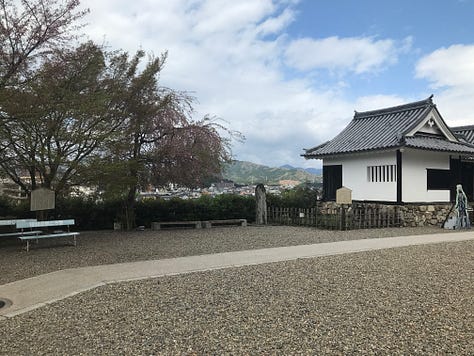
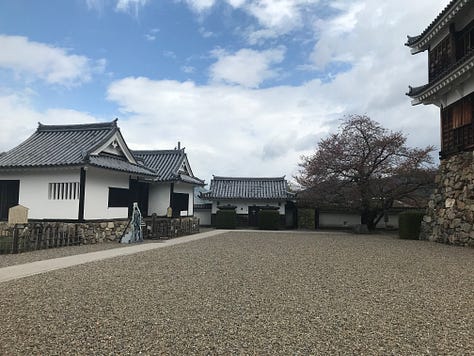
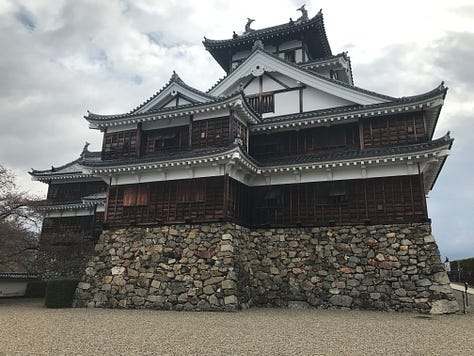
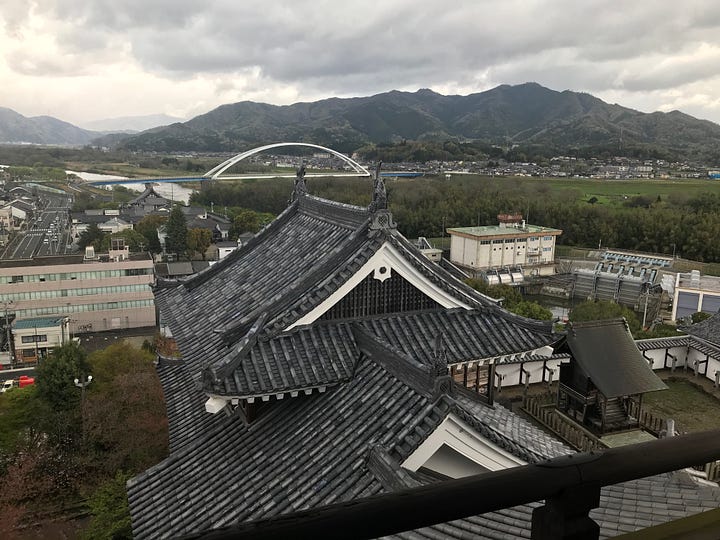
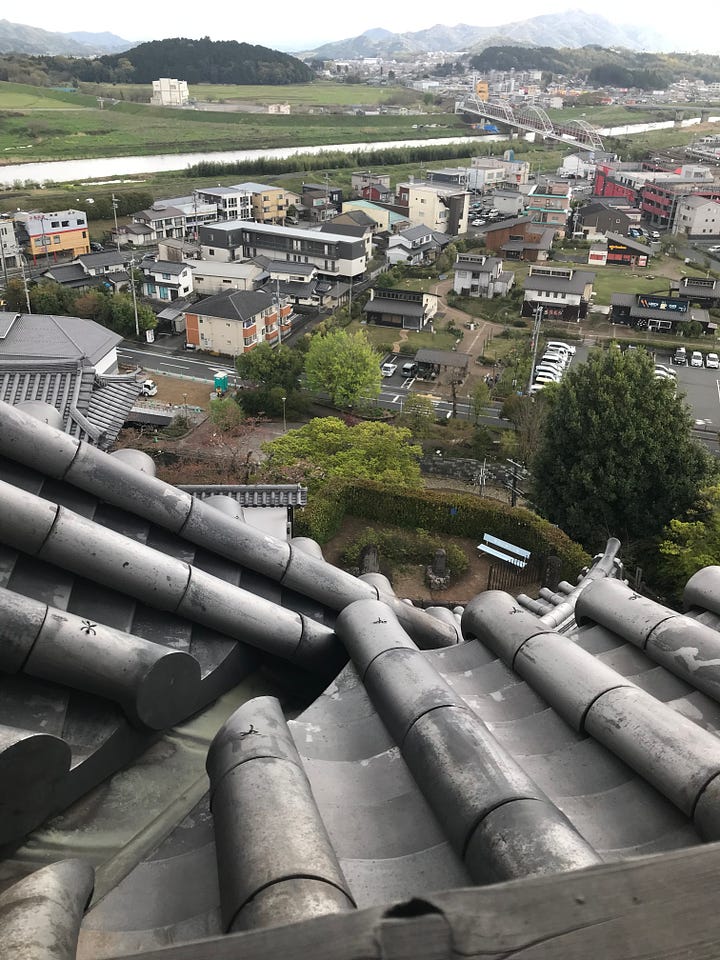
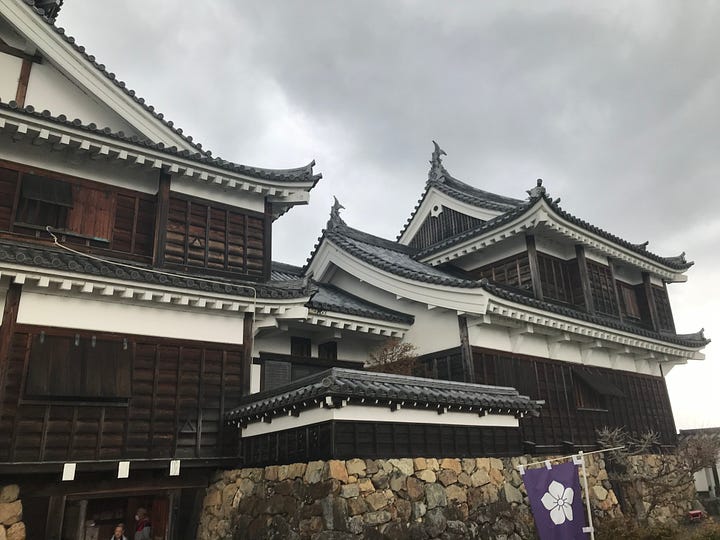
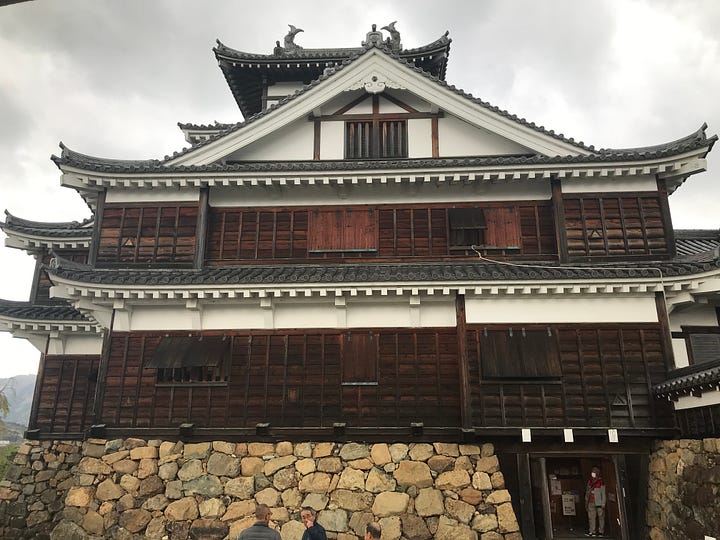
Despite the heavy cloud, the views from the castle were good. I could see far in every direction - the Yura River to the east, the station from which I had just come to the west, the Haze River from my previous walking to the south, and finally, where I was heading - the mountains where devils reside to the north.
I left the castle, and began to follow the Yura River north. A group of three kura storehouses caught my eye. Out in the countryside, it’s common to find single kura, with their thick mud walls and high windows, as part of a farmhouse compound. But three together? That was rare and prompted me to peer into the walled yard. A square western-style house stood beyond the storehouses. Western-style in the sense of most early foreign houses in Japan, an ornate Victorian clapboard house, as grey as the sky behind it. It was the house of a well-to-do merchants, who helped pay for the levee to prevent flooding of the town, and showed their confidence in the embankment by building their house and commercial headquarters just behind it.
A merchant family’s western-style house
It began to rain, heavier and heavier until I was dripping and it became hard to raise my head. The rain found leaks in my waterproof trousers - zips I had failed to pull all the way up, pockets I had failed to close. The wind was blowing from the north-east, off the Sea of Japan. Blue sky began to open up, although even the very fringes of the cloud were packed with rain, so that I stood in bright sunlight while the rain continued to pour.
Eventually though, the rain stopped for long enough for me to eat second breakfast, a hastily-bought cheese and onion bread from the convenience store. In the background the chant: ichi-ni-san-shi-go-roku-nana-hachi-something (I couldn’t catch the end) from girls drilling for softball. The river was lined with abandoned allotments, and among the abandoned allotments, abandoned cars. They were sunk half into the soil and covered with bare creepers.
Levee and gnarly trees
I followed the embankment for miles. A cyclist passed me, no hands on handlebars, arms outstretched, trying to dry off wet gloves. On the wet, black tarmac of the embankment, I spied a tiny green frog, frozen in fear. The embankment ended, pushing me back towards the main road. The road was busy enough that I needed to sprint to get across safely. But there was continuous pavement, separated by a crash barrier. There were even two tunnels just for pedestrians, former tunnels of the North Tanba railway line.
Former North Tanba Railway tunnel
Then, back on the embankment again. The valley broadened out. There were fields. It had been sunny for long enough that the embankment steps were already drying off. I sat and ate lunch, watching trains running along the Kyoto Tango line (the replacement for the North Tanba line), and enjoying the sunshine. I could continue down the levee until it reached a riverside park outside the town of Oe. A few cherry blossoms were hanging on despite the green leaves sprouting just next to them.
At Oe, I left the Yura River and started up the much smaller Kumohara River. A few miles later, I left the Kumohara and followed the Miyagawa - a fast-flowing mountain stream up towards the pass through the devil-infested mountains. The showers had passed, continuous sunshine warmed the narrow valley. There was a slightly Alpine feel - rushing water, tree-covered slopes, fields of bright green. In the village of Oechonaiku, there was an akiya with trees growing inside the house, threatening to burst out through the windows. I wanted to take a photo, but it felt too intrusive in such a quiet village. Twenty years or so ago, the village had clearly decided to make use of its cultural and environmental attractions. Signposts pointed along trails, but some were so faded as to be unreadable, and most were almost illegible. After an initial burst of enthusiasm, it seemed no one had the energy or money to maintain what had been started.
Hayfever-causing Japanese cedar trees (sugi) on the far bank of the river
I was just going to be in time to take the train back down to Fukuchiyama without having to wait long. As I approached the station, I passed a cafe and information centre for the oni (Japanese devil creature) park. These mountains were the traditional haunt of these oni. The cafe and information centre, rather than being filled with tourists, seemed to be occupied by old local men shooting the breeze.
Traditional-roofed rural Japanese houses. Under the corrugated metal cover is thatch
The cute red and gold one-man train rolled in, filled with Indian tourists. I felt incredibly Japanese sitting there quietly in my mask (I still wear it on crowded trains), while the tourists walked up and down the train chatting and admiring the views.





